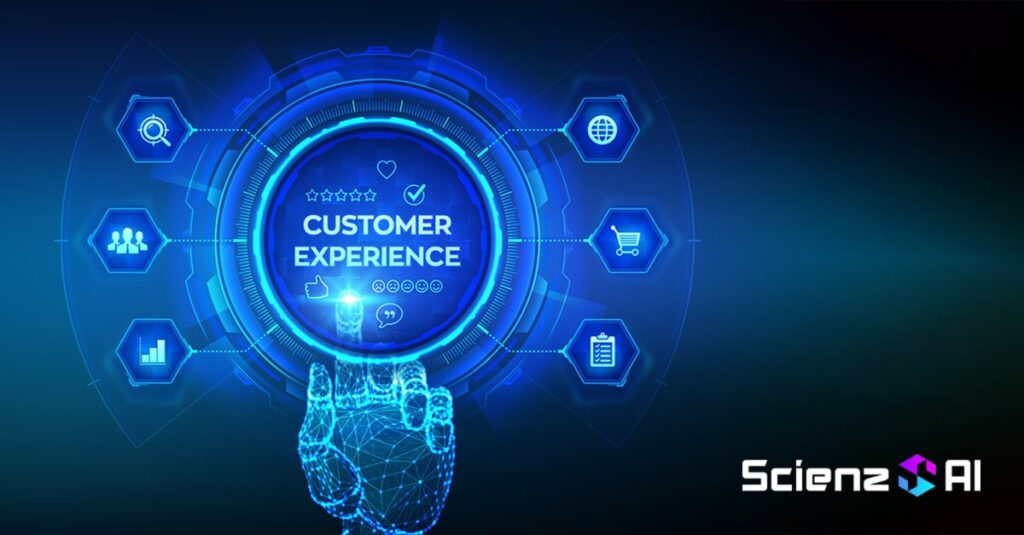Customer journey orchestration designs, automates, and tracks customers’ journeys online and offline, across various touchpoints. An ever-dynamic process, it harnesses customer data and adapts to their behavior to create real-time, personal experiences at every stage of their lifecycle.
AI customer journey orchestration is one way to elevate the customer experience strategy, making it more seamless and personalized via identifying behavioral patterns, forming “smart triggers” that automate relevant actions, and collecting data for improved future interactions.
Customer Experience Optimization With AI
Customer engagement with AI may no longer be a nice-to-have given the ongoing mandate of CX leaders and teams: Give customers relevant communications and experiences, or they will opt out.
“Right now, marketing is failing more than it works,” Matthew Camuso, product marketing manager for CRM software firm Pegasystems, warned at The MarTech Conference.
The reason it’s failing: “[I]t’s because of most of what we push, and when we push it, has no real relevance to the consumers,” Camuso said, citing that 68 percent of respondents in a study of more than 5,000 consumers don’t believe brands care about what they need.
Brands risk turning customers off when they rely on pre-packaged messages sent across customer clusters, which some of these segments may find irrelevant.
AI-Driven Journey Mapping: Best Practices and Applications
Traditional marketing campaigns divide customers by demographics, location, and other categories to form segments. Once marketers generate their list, they target those individuals across channels. A low-yield strategy, Camuso said, typically generating just one to two percent of sales, and a product and sales-focused technique that can take its toll on customer relationships.
Now AI-driven journey mapping has taken center stage. With every customer data that comes in, AI recalculates the score to keep the messaging up-to-date and relevant – message-based next-step actions that form a crucial part of the customer experience. AI can also help build webpages and mobile outposts that are tailored to customer preferences based on updated customer profiles and information.
Here are four best practices to follow in AI customer journey orchestration:
- Use AI for customer data analysis: AI algorithms can analyze huge amounts of consumer data and in almost real-time identify trends and patterns. CX teams then gain data-rich insights into their needs and preferences – another step toward optimizing and personalizing their campaigns and outreach.
- Keep customers at the core of the design process: Rather than focus on individual touchpoints, adopt a holistic and customer-centric mindset. Put yourself in the shoes of different customers to understand the target audience’s wants and needs. Explore ways to further incorporate customers in the journey mapping.
- Harness predictive modeling: Through the use of predictive models, AI can forecast customers’ future behavior and intent, allowing CX teams to proactively engage them at the right moments.
- Invest in continuous learning and evolution: Constantly review customer journey maps and refine them based on fresh insights and dynamic behaviors. AI systems enable this adaptive process as its algorithms also continue to learn and derive more information from every interaction.
Meanwhile, here are some real-world examples of AI-driven customer mapping:
- In e-commerce, AI can analyze customer interactions and produce personalized product recommendations as well as proactive customer support.
- In financial services, machine learning can predict which customers are likely to churn and proactively engage them with a targeted offer, therefore improving retention rates.
- In telecommunications, AI chatbots can handle common customer queries and free up human agents to deal with more complex issues.
- In travel companies, AI algorithms can provide personalized travel recommendations based on past customer bookings and user searches.
What Lies Ahead for Customer Journey Orchestration
Bob Hale, CEO of marketing software firm Alterian, predicts that orchestration will see closer integration with contact centers and marketing domains as players zero in on “a more detailed and journey-centric view of the customer.”
AI and machine learning will drive this integration, using data for enhanced customer experience. Investment is likely going to push for simplification for users and new explorations in customer journey analytics, according to Hale.
The goal is to innovate and enhance the functionality of software solutions, making them more intuitive and effective in handling customer data.
Furthermore, the improved customer centricity from AI can make the industry more effective and relevant than ever. Unlike the traditional customer journeys mapped out linearly and taking customers from action X to action Y, AI-driven journey mapping stays customer-centric but gives teams a bigger number of options based on customer profiles.
This means as AI guides the process, it enables more complicated journeys using multiple variables. The result: fresh, relevant messages for current customers, sending them the ultimate signals of empathy and true regard for their individual needs.
Related Readings:
How AI Is Used in Data Analytics for Marketing
AI Supercharges Email Marketing Via Hyper-Personalization, Audience Segmentation
AI Marketing in Focus: IBM Harnesses Generative AI Tool Adobe Firefly




